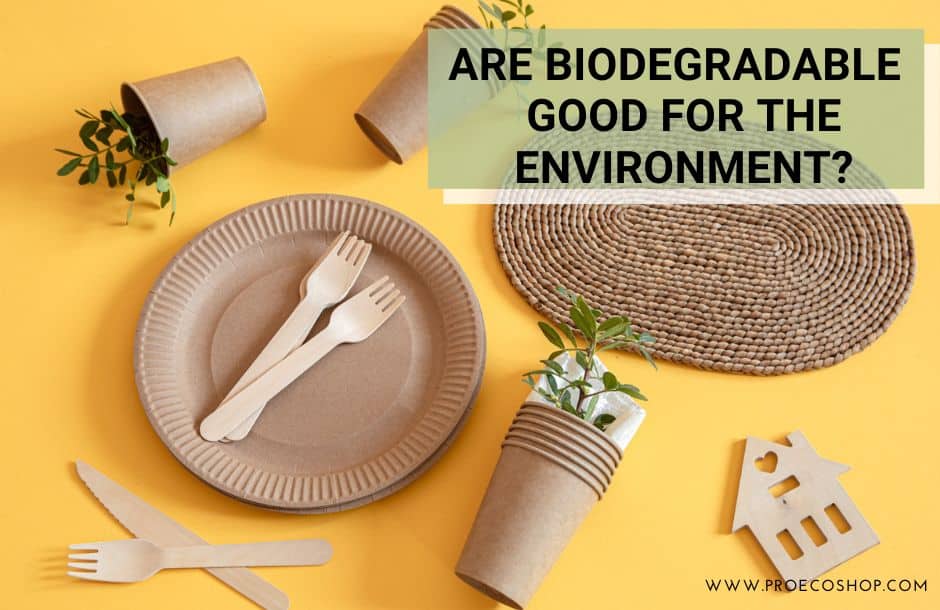In recent years, the use of biodegradable substances has become more popular as a way to reduce the amount of waste that ends up in landfills. But what are biodegradable substances, and how do they affect the environment? This article will answer those questions and more.
When it comes to biodegradable substances, there is a lot of misinformation and confusion floating around. Some people believe that all biodegradable substances are environmentally friendly, while others think that any environmentally friendly substance is automatically biodegradable. The truth is that not all biodegradable substances are environmentally friendly, and not all environmentally friendly substances are biodegradable.
What is the difference between biodegradable and environmentally friendly?
Biodegradable substances are those that can decompose in the presence of water and oxygen. This process of decomposition breaks down the substance into its component parts, which can then be reused by the environment. environmentally friendly substances, on the other hand, are those that do not harm the environment. They may or may not be biodegradable.
There are a number of different biodegradable substances, but some of the most common are plastics made from corn starch, paper made from agricultural waste, and biodegradable bags made from plant materials. All of these substances can be broken down into their component parts and reused by the environment.
There are a number of benefits to using biodegradable substances. First and foremost, they are better for the environment. When biodegradable substances decompose, they release fewer harmful toxins into the atmosphere than their non-biodegradable counterparts. They also help to reduce the amount of plastic and other waste that ends up in landfills and oceans.
Second, biodegradable substances are often more affordable than traditional plastics. This is because they can be made from plant materials, which are relatively cheap.
Finally, biodegradable substances are easier to recycle. All you need is a bucket of water and some oxygen, and the substance will break down into its component parts.
While biodegradable substances offer a number of benefits, there are also a few drawbacks to consider. First, biodegradable substances may not break down in all environments. For example, if they are not exposed to oxygen, they will not decompose. Second, biodegradable substances may not be as strong as traditional plastics, so they may not be suitable for all applications.
What are biodegradable substances?
Biodegradable substances are materials that can decompose naturally in the environment. This means that they can be broken down into their component parts by microorganisms such as bacteria and fungi.
How do biodegradable substances break down?
When biodegradable substances are exposed to oxygen, they break down into three main components: water, carbon dioxide, and biomass. The water and carbon dioxide are released into the atmosphere, while the biomass is broken down into smaller pieces by the microorganisms.
What are the benefits of biodegradable substances?
The main benefit of using biodegradable substances is that they reduce the amount of waste that ends up in landfills. This is because biodegradable substances break down naturally, whereas non-biodegradable substances do not.
What are the challenges of biodegradable substances?
The main challenge of using biodegradable substances is ensuring that they break down properly. If they do not break down properly, they can still cause environmental damage. Another challenge is ensuring that they are not harmful to the environment or to human health.
Can biodegradable cause environmental problems?
Biodegradable waste is often considered to be more environmentally friendly than other types of waste, but there can be environmental problems associated with its disposal.
One problem with biodegradable waste is that it can create methane gas as it decomposes. Methane is a greenhouse gas that is 23 times more potent than carbon dioxide, and it can contribute to climate change.
Another issue with biodegradable waste is that it can release pollutants into the environment. These pollutants can contaminate water supplies and soil, and they can also be harmful to plants and animals.
In some cases, biodegradable waste can create anaerobic environments that are favorable to bacterial growth. These environments can lead to the release of harmful toxins, and they can also be a source of odors.
When biodegradable waste is improperly disposed of, it can create a number of environmental problems. It is important to take these issues into account when deciding how to manage biodegradable waste.
Despite these drawbacks, biodegradable substances are still a better choice for the environment than traditional plastics. If you are looking for a more environmentally friendly option, consider using biodegradable substances.

